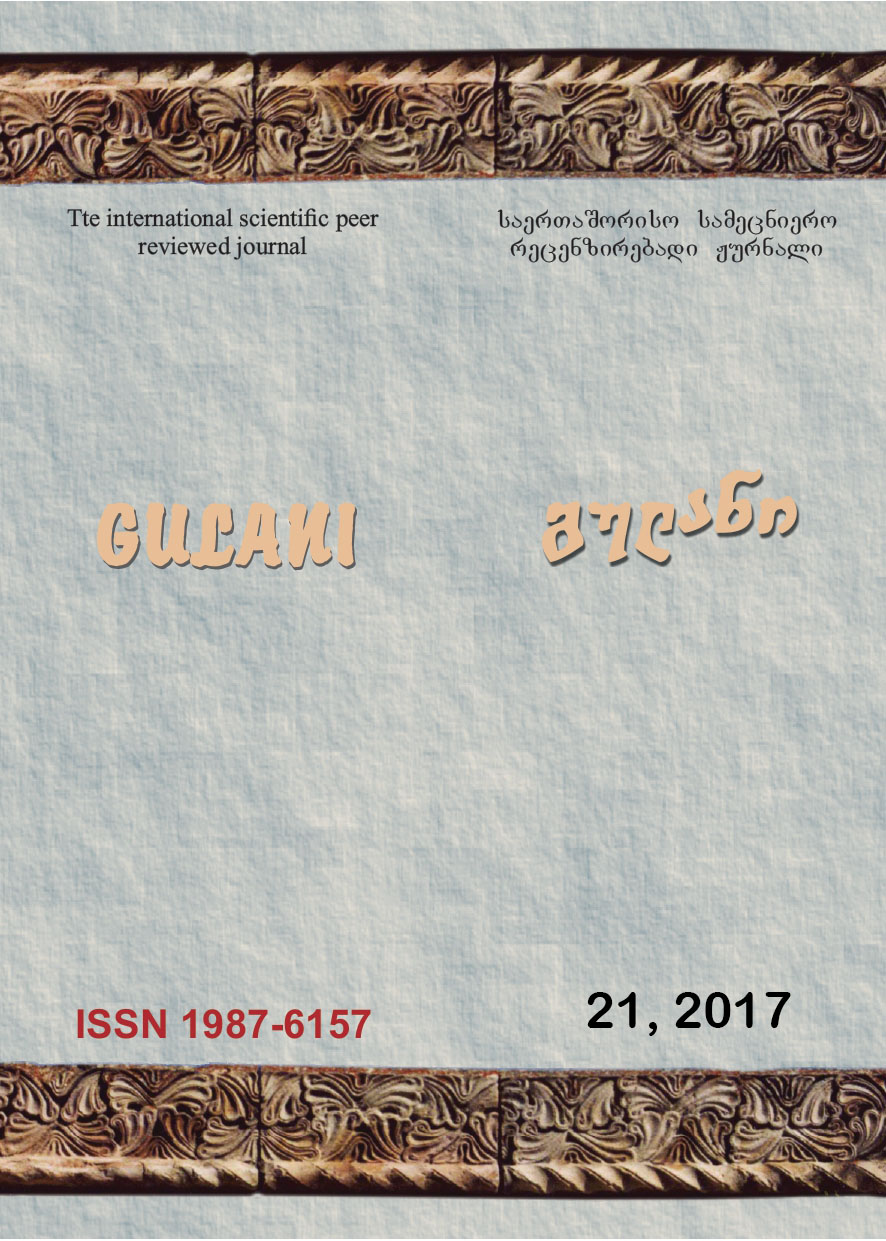REFLECTION OF MESKHETI IN SVANURI
Main Article Content
Abstract
The paper deals with the history of the most valuable icon that is kept in the Ushguli Seviour Church and which is donated by Vakhtang Tsakhanelisdze and his wife Khuashaki at the boundery of XII-XIII centuries (Taqaishvili 1937:153). It turns out that they belonged to a high social rank and probably lived in the village Tsakhani, in river Odzrkhe gorge. Acad. Sergi Jikia’s fundamental three-volume book “Big register of Gurjistan’s vilajet” (1941:11, 122; 1947:9, 120; 1958:165, 168-173, 496) gives the description of this village. M.Brosset also speaks about it (1861: XXV). It is still located in the same place (cf. R.Topchishvili, “Svaneti and inhabitants of Svaneti”, 2015:59) and belongs to contemporary Adyghe municipality. Today Imerians are inhabiting there instead of local inhabitants (Muslim Meskhetians) who have been named “Meskhetian Turks” or “Caucasian Turks” and who have been deported from their home-land in 1944 (M. Beridze 2013:185-194).
Basing on phonematic analysis of Geo. wax- / Zan yox- / Svan yex- < yax the author of the study attempts to link three Georgian surnames to each other: wax-an-el-is-Ze (in Meskheti), yox-on-el-i-Ze (in historical Samegrelo) and yex-an < yax-an (in Svaneti). In order to confirm this view, the article analyzes anthroponyms and toponyms.
